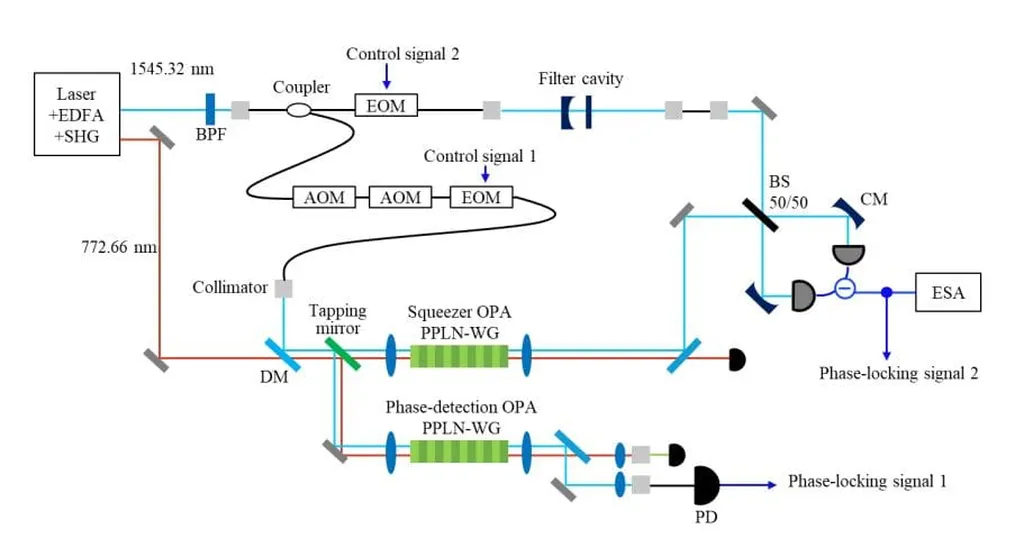In a significant stride towards advancing optical quantum computation, a team of researchers from the University of Tokyo, led by Kazuki Hirota and Akira Furusawa, has achieved a notable breakthrough in generating squeezed light. This accomplishment could have profound implications for the energy sector, particularly in enhancing the precision and efficiency of quantum sensors and communication systems.
The researchers reported the generation of 10.1±0.2 decibels (dB) of squeezed light using a broadband periodically poled lithium niobate (PPLN) waveguide optical parametric amplifier (OPA). This represents a substantial improvement over their previous work, where an 8.3-dB squeezing was observed. The key to this advancement lies in the reduction of phase fluctuations and overall optical losses in the measurement system.
To achieve this, the team introduced a novel phase detection technique that eliminates the need to tap a part of the squeezed light to obtain a phase-locking signal. Instead, they employed a phase-detection OPA seeded by a tapped probe and pump light before the squeezer OPA. This innovative configuration addresses the conventional trade-off between generating a high-signal-to-noise ratio phase-locking signal and minimizing the degradation of the squeezing level caused by optical tapping.
With these improvements, the phase fluctuation angle was reduced from 14 milliradians (mrad) to 9 mrad, and the total optical loss decreased from 12% to 8%. The achievement of more than 10 dB of squeezing by the broadband waveguide OPA is a crucial step towards realizing fault-tolerant ultra-fast universal optical quantum computation.
For the energy industry, this research opens up possibilities for developing more precise quantum sensors that can monitor and control energy systems with unprecedented accuracy. Additionally, the enhanced quantum communication capabilities could lead to more secure and efficient data transmission, which is vital for the smart grids and energy management systems of the future. The research was published in the journal Applied Physics Letters.
This article is based on research available at arXiv.

